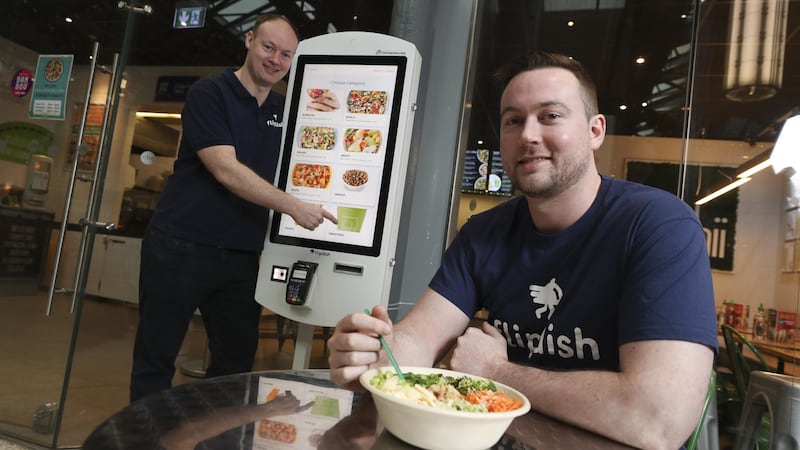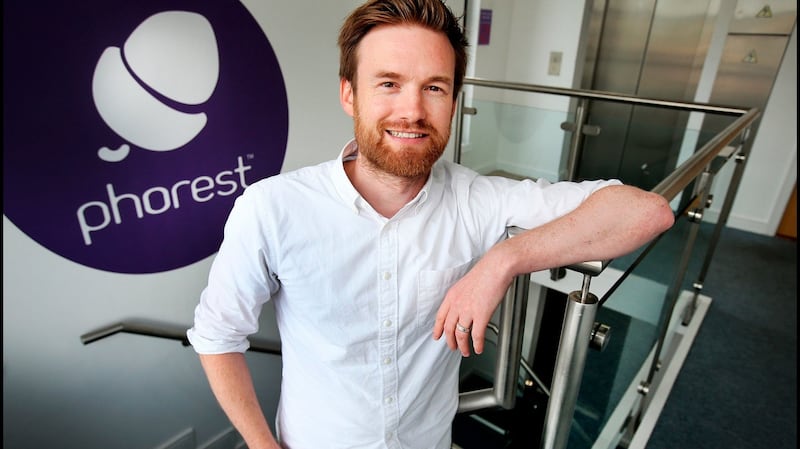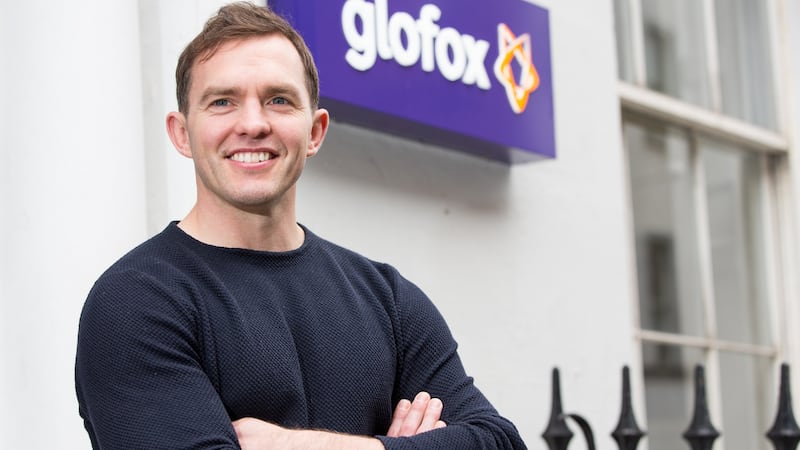Stripe, the online payments company founded by Irish brothers Patrick and John Collison, may be on its way to becoming a household name, but few people know exactly what it does.
It has made headlines globally over the last few years, due in part to a series of impressive multimillion dollar fundraises, and the relative youthfulness of its founders. Having recently announced a new $600 million raise to bring its valuation up to nearly $36 billion, Stripe is now one of the most valuable private fintech companies in the world. Its founders are each worth a cool €2.9 billion each, according to Forbes, making them among the world’s youngest billionaires.
Founded in 2010 in San Francisco, Stripe's technology handles hundreds of billions of dollars in transactions each year for its clients. While it was once largely seen as a payment solution that focused on start-ups and developers, its customers now include the likes of Amazon, Uber, Booking. com, Deliveroo, Google, Zoom and NBC.
Stripe may not be as mainstream as older online payment companies like PayPal, but chances are you’ve engaged with its solutions whether you know it or not.
According to its own figures, more than 56 per cent of people in Ireland used its payment solutions last year. Similarly, it is estimated that half of Amercians who bought something online in 2019, also did so via Stripe, even if unknowingly.
"A lot of our customers don't know about us using Stripe. It all works in the background and we're happy with that because they don't really need to know about it," is how Flipdish co-founder and chief executive Conor McCarthy puts it.
Stripe’s early success was largely due to it working to simplify the payments process so software developers only needed to add in a couple of lines of code in order to accept online payments on websites. Its range of products has greatly expanded over the years, but the ease of use for which the company first became known is still central to its technology. That’s a key reason start-ups in particular love Stripe, given they often have to move quickly and be adaptive.
Flipdish, which has positioned itself as an alternative to online fast-food delivery aggregators such as Just Eat and Deliveroo, has developed technology that allows smaller restaurants to accept digital orders through websites, apps and its own specially designed self-service kiosks. This means they don’t have to rely on aggregator platforms that typically charge higher fees and can exert more control over the customer experience.

McCarthy says the company went with Stripe from the start to manage its payments.
“At the beginning it was just myself and one developer, and we were able to integrate with Stripe in a couple of hours. I’ve done integrations with other payment providers over the years and they have always been a nightmare. So it was like night and day. Much easier,” he said.
McCarthy said tens of thousands of orders are going through its platform from customers in a number of countries using different payment methods with Stripe able to handle them all.
The amount of card orders placed with Flipdish has jumped in recent months due to the Covid-19 crisis and as more businesses sign up to the platform.
“Our sign-up rates have more than doubled in the last month so there are a lot of new businesses, such as typical dine-in restaurants who want to do collection and delivery for the first time. We’re also seeing the likes of convenience stores who are offering click-and-collect, allowing people to order online so as to stop them coming into the shop,” he says.
“Many businesses are starting to pivot and look for other ways to get their products out there in a safe way, and we’re able to help them do that,” McCarthy says, adding that the company intends to start using Stripe Connect Custom shortly to disperse money directly to restaurants and other clients rather than having to handle that money at all.
Flipdish is operating in a number of countries outside of Ireland and McCarthy says that Stripe has helped them to easily open in new markets.
“Basically there’s a list of countries which Stripe is in and so we know that we can support any of those countries without having to do any extra work. When we first took on customers in the Netherlands for example, we weren’t concerned about payments, all we had to do was to translate the site. If there is a country where Stripe doesn’t offer support, then it does inform our business decisions, because it means we are less likely to go there,” says McCarthy.
He adds that with many payment companies focused on price above all else, many don’t necessarily care about their customers as much as they should.
“One thing I also like is that Stripe has a very good reputation and because of that you feel secure because they can’t really screw you over. The fact they have a reputation to protect means you feel safer as a customer because you know they are going to do the right thing by you. Many payment companies don’t care as much and compete on price, but it means you have to have faith that they will treat you fairly. When it comes to payments it’s important that you trust the company you’re working with,” McCarthy says.
Changes
Another Irish company to adopt Stripe early on for payments is salon software company Phorest, which is still using it as it adapts in the face of changes forced upon it by the Covid-19 pandemic.

Founded by Ronan Perceval in 2003 and now employing 200 people, Phorest has developed office management software for hair and beauty salons that allows them to take bookings online, manage appointments, roster staff, control stock, and implement marketing campaigns and loyalty programmes. The company works across 7,000 salons in Europe and the US and Australia.
Phorest accepts about half a million bookings online each month, but chief technology officer Patrick Monaghan said when it started, many salons were reluctant to make the move online because they feared no-show rates might soar as a result if they accepted bookings this way.
Adopting Stripe to facilitate payments on Phorest’s app meant, however, that users’ card details were stored on the system meaning a no-show fee could be charged. It also ensured salons could have greater oversight in terms of forecasting future revenues and resourcing requirements.
“To get the entire salon industry to start moving online it was critical that we solved the problem of no-shows,” says Monaghan, who adds there was a sharp decline in missed appointments after the move.
With the coronavirus having forced salons to shut, Phorest also used Stripe to introduce a new facility so salons can now also sell vouchers and beauty products online.
Phorest says the move has been hugely successful with it just breaking €1 million in revenue.
Glofox, another Irish start-up that provides business management software, this time to gyms and fitness studios, is also helping its clients to continue to earn during the pandemic using Stripe.
Some 10 million fitness classes are booked using the company’s software platform every year, with some 2,000 gyms and studios across 44 countries using Glofox’s technology to manage their businesses.
It has previously used Stripe Custom Connect to build a white-label payments solution to make it easy for clients to accept payments from customers. More recently, the company, which has just raised an additional $10 million from investors, has introduced a new remote gym product that allows clients to provide online sessions during lockdown.
Glofox co-founder Anthony Kelly says gyms and fitness studios don't have or want big teams working away on dealing with payments.
“They would rather put the money into hiring staff to deliver a great experience than have to spend heavily on admin and back office payment support,” he says.
In addition to using Stripe to accept payments, Glofox is also using the company’s Sigma product to get a better understanding of its business analytics, as well as the Smart Retries solution to identify the best time to retry failed payment attempts.
It isn't just companies using the payments company's products. Matt Hoban, head of finance at the Jack and Jill foundation, believes it was one of the first charities to use Stripe to manage donations.

“The reason why we did it is that their customer service is outstanding. Fees are reduced for non-profits so we pay very little for transactional costs. They also have great security features covering data protection and so on and we’ve been able to eliminate paperwork, signature files and things like that because the donor does it themselves through Stripe,” he says.
The foundation needs to privately raise €3.8 million a year so it can provide 123,000 hours of home nursing care. However, with the Covid-19 crisis it is almost impossible for it to fundraise offline currently.
“As we move through the crisis, more of our fundraising is going to have to move online and we’re going to have to come up with more unique ideas to actually enable us to fundraise,” he says.
The charity also recently used Stripe's payment technology for a special online art auction called Incognito, which includes paintings from among others, Bruce Springsteen, Paul Costelloe, Bono and Maser.
“The ability to do something like Incognito online is only possible because we have something like Stripe,” he says.





















